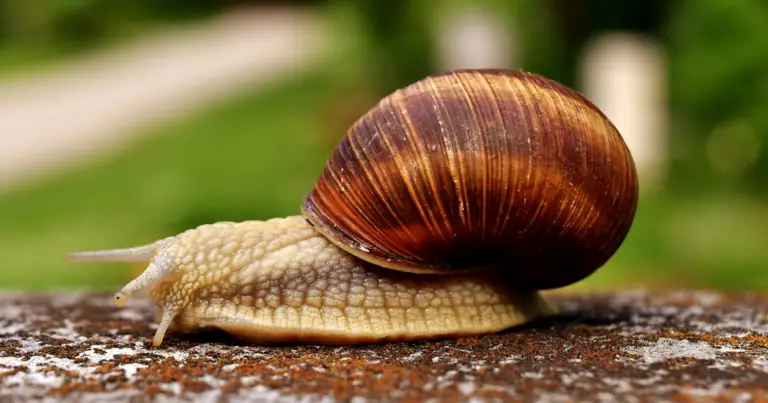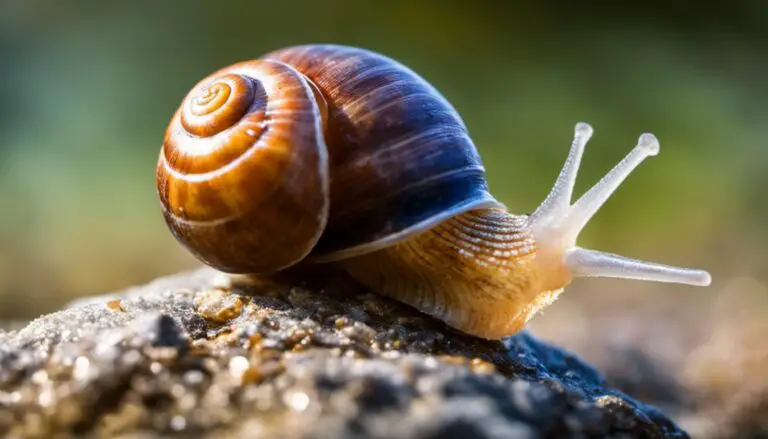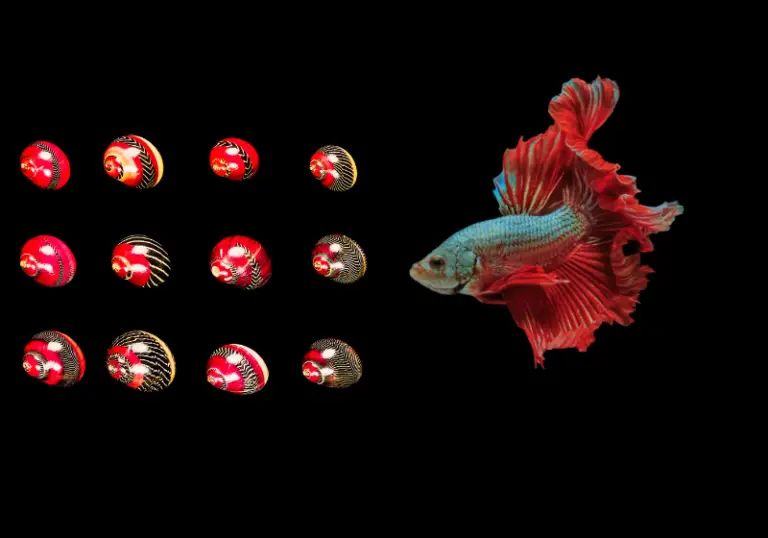Do Snails Live in Water?
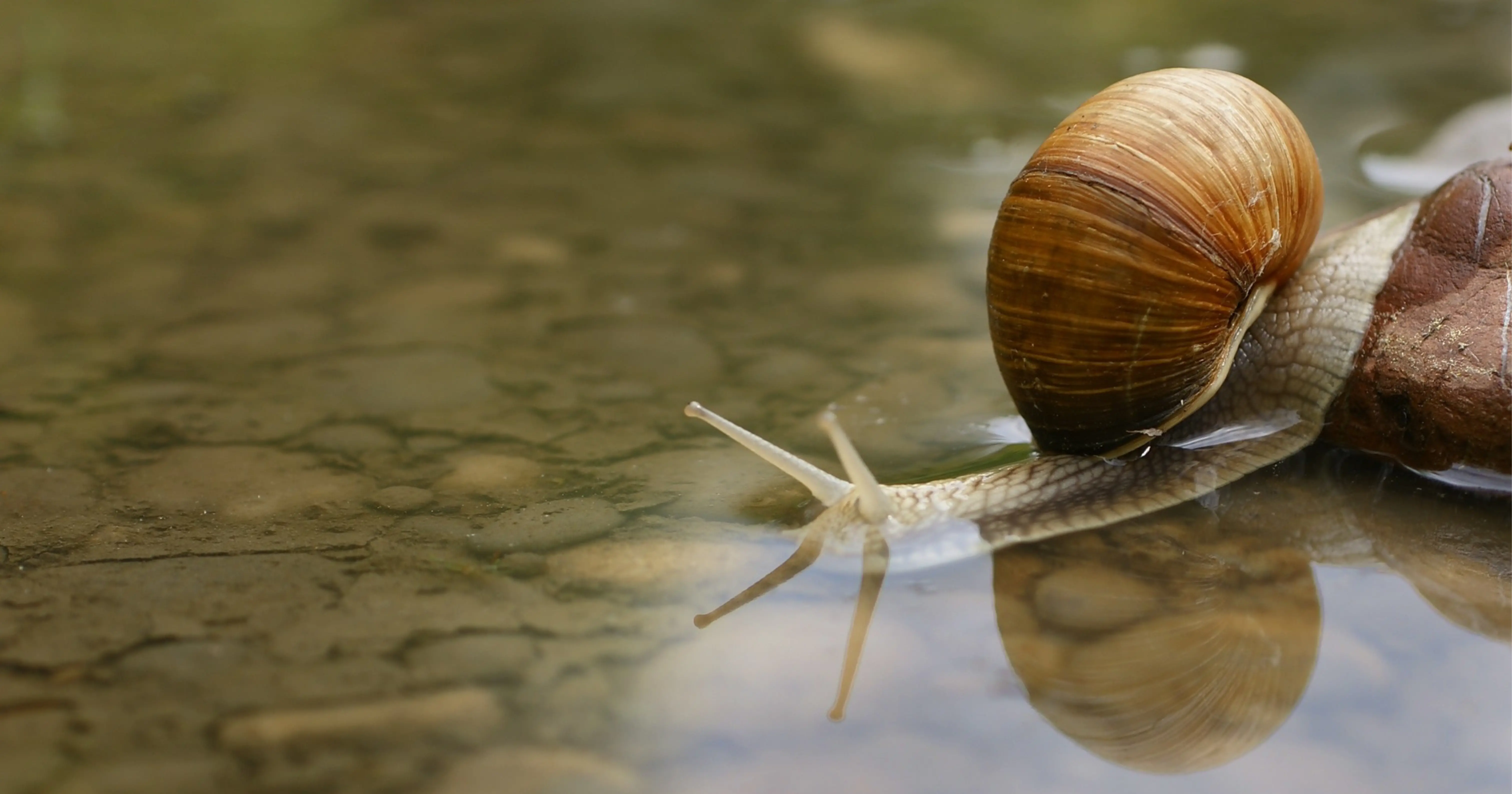
Many people often wonder, “Do Snails Live in Water?”. Well, the answer is yes and no, depending on the type of snail being considered. Snails are a diverse group of creatures, with approximately 43,000 species found on earth, classified as land, sea, or freshwater. Their habitats and living preferences are primarily determined by their mode of respiration and the type of ecosystem they inhabit.
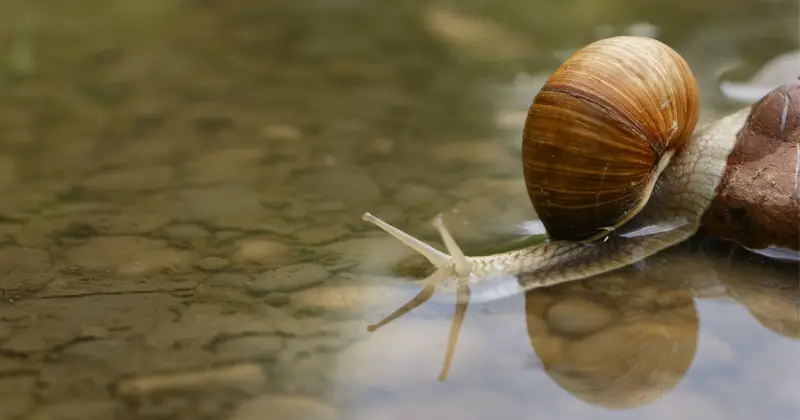
When it comes to freshwater snails, they can be found in a variety of water sources, from small springs and pools to large rivers and lakes. These gastropod mollusks have a shell and are well adapted to aquatic environments. On the other hand, sea snails are marine creatures that thrive in saltwater habitats, such as oceans and seas.
Meanwhile, land snails are a separate group that primarily lives on land, although some species can also survive in damp and moist environments. Typically, they are not adapted to live in water for extended periods, and deep water can be fatal to them. Each snail species has unique characteristics and living requirements, making it essential to understand their specific needs before attempting to care for or study them.
Contents
Table of Contents
Snails and Their Natural Habitats

Land and Water Snails
In their natural habitats, snails can be found in both land and water environments. While some species are more adapted to life on land, others thrive in fresh water, allowing them to fulfill unique roles within their ecosystems. For example, land snails will quickly drown in water, so it’s often used as the standard method for preparing them for anatomical examination.
On the other hand, freshwater snails are gastropod mollusks that live in freshwater, and they have a shell in most cases, with very few exceptions (source).
As you explore the world of snails, you’ll find that they occupy various habitats, ranging from ephemeral pools to the largest lakes and from small seeps and springs to major rivers. They can secrete a fluid to navigate various surfaces, such as walls, ceilings, rocks, plant leaves, mosses, and cracks in any area (source).
Geographical Distribution
Snails can be found throughout the world and in various habitats. Freshwater snails, in particular, have managed to disperse across isolated bodies of water using interesting methods such as transport via birds’ feet, wind-blown leaves, and floods (source). Many snails prefer to stay close to rocks, ditches, and plants to have a place to protect themselves from their natural predators (source).
Your understanding of snails and their natural habitats will be greatly enhanced by considering both land and water snails and their geographical distribution across diverse environments. In doing so, you gain a comprehensive view of the versatility and adaptability of these unique creatures.
Understanding the Anatomy of Snails

Shell Structure
A snail’s shell provides protection and a place to retreat when sensing danger. The shell’s structure is divided into several chambers, known as whorls, which spiral out from the center. Each new growth is added to the shell’s outer edge, making it larger and stronger. Sometimes, snails living in water may have thinner shells, allowing easier movement.
Respiratory Systems
Snails have adapted to their specific habitats by developing unique respiratory systems. Freshwater snails generally possess gills that enable them to extract oxygen from the water, while land snails have a special lung system. For instance, some aquatic snails have a breathing tube called a siphon, which they use to draw in air and oxygenate their gills even when underwater.
Movement and Adaptations
To navigate through their environment, snails rely on their muscular foot, which moves in a wave-like motion, secreting a layer of mucus, enabling them to glide easily. This slime helps in movement and serves as their trail, which may help them find their way back or be followed by other snails. The tentacles on their head provide the snail with sensory information about their surroundings, including detecting food and potential dangers.
Snails are not known for their speed or agility in swimming. Most aquatic snails use their muscular foot to crawl along surfaces underwater. At the same time, some are capable of a limited form of swimming by rapidly opening and closing their shells, which propels them forward.
In conclusion, understanding the anatomy of snails gives you a better insight into their abilities to live in various environments, including water. Their shell, respiratory systems, and movement adaptations all play roles in enabling these fascinating creatures to survive and thrive in the diverse ecosystems they inhabit.
Types of Water Snails

In this section, you’ll learn about the various types of snails that live in water. These can be broadly categorized into Freshwater Snails and Sea Snails. Let’s dive deeper into these subcategories.
Freshwater Snails
Freshwater snails are found in aquatic habitats such as lakes, ponds, and rivers. They are crucial members of aquatic ecosystems and serve as prey and predators in their environment. Here are some common species of freshwater snails:
- Mystery Snail: Also known as apple snails, they are popular among aquarium enthusiasts. They are great for keeping aquariums clean and are fun to watch as they move around.
- Assassin Snails: These snails are known for their predatory behavior, feeding on other snails and aquatic worms. They have a distinctive conical shell with yellow and brown stripes.
- Ramshorn Snails: They have a flat, tightly coiled shell that resembles a ram’s horn. These snails are excellent at keeping aquariums clean by feeding on algae and dead plant matter.
- Nerite Snail: Nerite snails have striking patterns on their shells and are appreciated for their algae-eating capabilities in freshwater tanks.
- Pond Snail: These snails are common in garden ponds and slow-moving waters. They reproduce quickly, sometimes leading to overpopulation issues if not managed.
- Rabbit Snails: Known for their unique elongated shells, they are a fascinating addition to freshwater aquariums.
- Malaysian Trumpet Snails: These nocturnal snails are known for their trumpet-shaped shells and burrowing habits. They help to aerate the substrate in aquariums and are effective scavengers.
Sea Snails
Sea snails are marine gastropods that live in ocean environments. They come in a wide variety of shapes, sizes, and colors. Some common species of sea snails include:
- Zebra Snails: These snails are easily recognized by their black and white striped shells. They are algae eaters and can help keep tanks clean.
- Conch Snails: Conch snails have large spiral shells and can grow up to a foot in length. They are often found in tropical marine ecosystems.
- Moon Snails: Known for their large, rounded shells, moon snails are predatory marine gastropods that hunt for clams and other mollusks.
- Whelks: Whelks have elongated spiral shells and are carnivorous, feasting on other marine invertebrates.
So, whether exploring the great outdoors or maintaining an aquarium, you will surely encounter various types of fascinating snails that live in the water. As you’ve learned, these species play vital roles in their ecosystems, either helping to keep their habitat clean or acting as predators/prey in the food chain.
Snails in Various Water Conditions

Temperature and Climate Influence
Snails, like other animals, are affected by temperature and climate conditions. Generally, snails prefer to live in temperatures ranging from 15-30 degrees Celsius (59-86 degrees Fahrenheit) with relative humidity levels between 70%-90%.
Snails tend to be less active in cold water environments and may go into dormancy or hibernation. Higher temperatures can speed up their metabolism, making them more active, but extreme heat can also be harmful or even fatal to some snail species.
Saltwater Vs. Freshwater
There are different types of snails across various water conditions, including fresh and saltwater snails. Freshwater snails, which live in lakes, ponds, rivers, and streams, are primarily members of the subclass Pulmonata. It’s worth noting that some freshwater snail species, like the bladder snail, prefer shallow waters with lots of vegetation near the shoreline.
On the other hand, saltwater snails inhabit marine environments such as oceans, seas, and coastal areas. They belong to a subclass called Prosobranchia and have unique adaptations to survive in salty or brackish waters with varying salinity levels.
Not all snails live in water, though; some land snails do not inhabit aquatic environments. However, it is essential to recognize that land snails will quickly drown in water and must be kept in a moist habitat with adequate humidity to support their survival.
Understanding the different water conditions that various snail species inhabit is crucial for providing appropriate care in captivity and preserving their natural habitats. Paying attention to factors like temperature, freshwater or saltwater environments, and the presence of vegetation can make a significant difference in the health and well-being of these fascinating creatures.
Best Freshwater Snails – 7 Good Ones to Try!
Keeping Snails as Pets
Aquarium Snails
Aquarium snails can be intriguing additions to your aquatic environment. Popular freshwater snail options include mystery snails and nerite snails. These snails thrive in aquariums and can be housed with other peaceful tankmates, such as shrimp or fish. Maintaining a balanced ecosystem within the tank will help support the health of your pet aquarium snails.
To care for these intriguing pets, be prepared to provide appropriate food and a suitable environment, which includes regularly monitoring the tank’s water quality, temperature, and pH. A mix of live plants and specialized snail food will ensure your snails have a balanced diet to promote growth and well-being.
Ensuring the Right Environment
Creating the right environment for your pet snails is essential, whether aquatic or garden snails. You’ll want to ensure the tank is large enough and contains clean water for an aquarium. For aquatic snails, freshwater tanks are the most common choice. Ensure the tank is properly cycled, with a nitrogen cycle well-established to stabilize the water conditions. Regular monitoring and maintenance will help maintain an optimal environment for your aquatic pets.
A secure container with air holes and a substrate of soil, leaf litter, or a combination of both will make a suitable home for garden snails. Make sure to include some hiding spots like rocks, branches, and leaves for your snails to feel safe and secure. The environment should be moist but not soaking wet to keep your garden snail pets comfortable and healthy.
Both aquarium and garden snails require proper care and attention to ensure their health and well-being. You can enjoy the unique experience of keeping snails as pets in your home by providing an appropriate environment.
Snails and Their Ecosystem Role

Snails as Predators and Prey
Snails play an important role in their ecosystem as predators and prey. As predators, freshwater snails feed on various organisms such as algae, microorganisms, and even dead plants or animals. Their consumption of algae helps maintain a balanced ecosystem, preventing excessive algae growth that could lead to harmful algal blooms.
On the other hand, snails prey on various animals like fish, amphibians, birds, and other invertebrates. By providing a valuable food source for these predators, snails contribute to the ecosystem’s overall health.
Snails and Disease Control
While snails play essential roles in ecosystems, they can also act as disease vectors. Some freshwater snails host parasitic flatworm species called trematodes, which can cause diseases like schistosomiasis in humans and other warm-blooded animals. You can find more information about this topic at Britannica.
However, certain types of snails, like the amphibious snail Ampullarius gigas, serve as natural cleaners for aquariums by consuming algae and decaying plants, thus indirectly helping in disease control by maintaining clean aquatic environments.
In conclusion, snails are an integral part of their ecosystem, acting as both predators and prey and in some cases, being involved in disease control. Understanding the complexities of their role can help you better appreciate the delicate balance of aquatic habitats and the need for conservation efforts.
Frequently Asked Questions: Do Snails Live in Water
Do freshwater snails breathe underwater?
Yes, freshwater snails can breathe underwater. They have an organ called a gill that allows them to extract oxygen from the water. Some freshwater snails also have a lung for breathing air, which they can use when needed. These snails are considered amphibious and may come to the water’s surface to take in air.
What types of snails live in water?
Different types of snails live in water. The most common water-dwelling snails are freshwater snails belonging to the Gastropods group. These snails typically have spiral shells and live in various aquatic habitats like ponds, lakes, rivers, and aquariums. Also, there are saltwater or sea snails, marine creatures found in oceans and seas.
Can garden snails drown in water?
Yes, garden snails can drown in water. While they need water to keep their bodies moist, they cannot breathe underwater. Garden snails have lungs, so they need to be able to access air. If they are submerged in water for too long, they can drown.
How long can sea snails survive out of water?
Sea snails can survive out of water for varying periods, depending on the species and environmental conditions. Some sea snails can survive for a few hours to several days without water, especially in a moist environment, or can seal themselves within their shells to maintain moisture.
What do water-dwelling snails eat?
Water-dwelling snails have a diverse diet, including algae, detritus (dead plant and animal matter), and other snails. Some water snails are also predatory, feeding on small aquatic animals. Their feeding habits can be beneficial for maintaining balance in aquatic ecosystems and keeping aquariums clean.
How long can land snails survive in water?
Like garden snails, land snails cannot survive in water for extended periods. Although they need water to stay moist and healthy, they cannot breathe underwater and will eventually drown if they cannot access air. Land snails should have only access to a shallow water dish for drinking and bathing.


